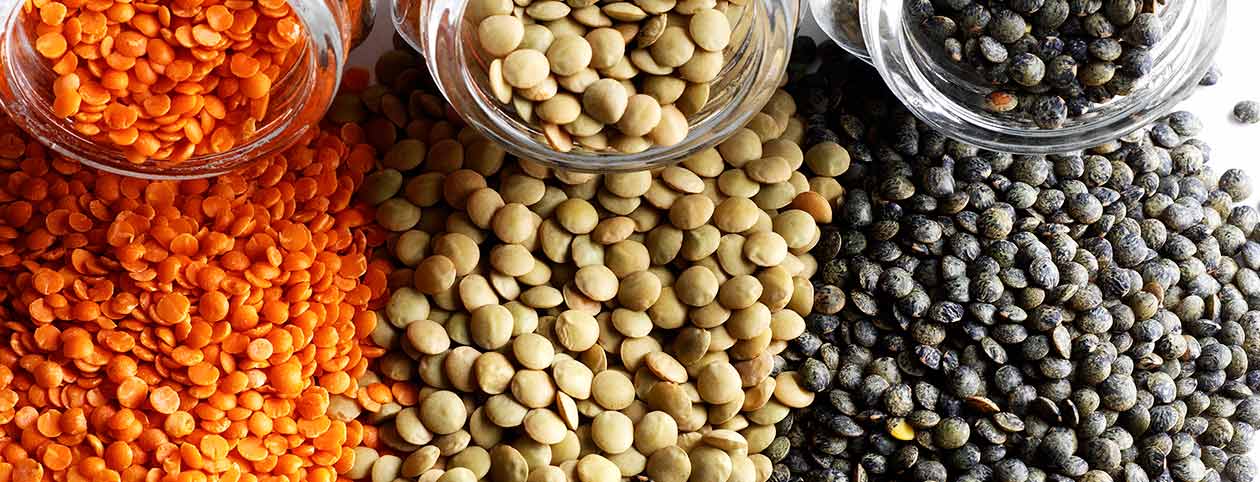
Advertisement
Lentils are one of the oldest known crops worldwide. Traditionally, lentils are cultivated across the Mediterranean and the Middle Eastern regions, where the legume is commonly used to add a rich, nutty flavor to curries, stews and casseroles.
It may not look like much, but the humble little legume packs amazing benefits linked to cardiovascular health, metabolism and cell development. Like most legumes, lentils boast an impressive nutrition profile chock-full of high-quality protein, dietary fiber, good carbohydrates and micronutrients.
The following are eight known health benefits linked to lentils.
Contain nutrients
Out of all plant-based foods, lentils contain the highest amount of proteins. But lentils also boast a long list of macronutrients, vitamins and minerals that aid various body functions including metabolism, immunity and blood circulation. A 100-gram serving of raw lentils contains the following:
- Calories: 352 kcal
- Protein: 24.63 g
- Carbohydrates: 63.35 g
- Fiber: 10.7 g
- Fat: 1.06 g
- Calcium: 35 mg
- Iron: 6.41 mg
- Magnesium: 47 mg
- Phosphorus: 281 mg
- Potassium: 677 mg
- Zinc: 3.27 mg
- Vitamin C: 4.5 mg
- Choline: 96.4 mg
Lentils are also an excellent source of B complex vitamins that boost immunity and support cell growth and development. B complex vitamins also slow the aging process. Meanwhile, amino acids, which are produced when proteins are broken down, promote healthy hair, skin and nails.
Support cardiovascular health
Lentils contain soluble fiber that inhibits the absorption of excess cholesterol, thus clearing the arteries of any cholesterol plaque and reducing the risk of cardiovascular conditions. Lentils also promote blood circulation due to the presence of iron, an important mineral that aids the production of oxygen-carrying red blood cells.
Build muscles
Lentils also make for inexpensive sources of high-quality protein. As an essential macronutrient, protein provides structural support to bones, tendons, ligaments and tissues. Protein also promotes metabolism and allows you to lose abdominal fat while retaining muscle mass. Since lentils are protein-rich foods, vegetarians can use lentils as excellent alternatives to meat.
Aid digestion
If soluble fiber mainly supports cardiovascular functions, insoluble fiber, on the other hand, works within the gut to aid digestion. It regulates bowel movement to prevent stomach ache, bloating, constipation and diarrhea.
Support weight loss
Besides preventing digestive disorders, insoluble fiber also induces satiety and reduces appetite. Lentils also contain a very small amount of fat, so you don’t have to worry about putting on weight. Lentils also have good carbohydrates that stimulate the body to burn calories faster.
Regulate blood sugar levels
Dietary fiber also works to prevent excess absorption of glucose that leads to weight gain and an increased risk of Type 2 diabetes. Fiber traps carbohydrates, especially the unhealthy kind that most empty grains contain, and inhibits its absorption. As a result, fiber can improve insulin sensitivity and significantly lower blood sugar levels.
Lower the risk of cancer
Lentils are also known to have anti-cancer activities thanks to the presence of lectins, a type of plant protein that most fruits and vegetables carry. As natural anticarcinogens, lectins can inhibit the growth of tumors and induce programmed cell death of cancer cells.
Prevent birth defects
Folate, a complex B vitamin, plays an important role in cell development. Therefore, pregnant women ought to increase folate intake to support fetal development, especially during the early stages of pregnancy. High levels of folate are also linked to a reduced risk of birth defects and complications during delivery.
Lentils are one of the easiest legumes to cook. Just soak, drain and boil until tender. As low-calorie and nutrient-dense foods, lentils are perfect to eat alongside salads, roasted veggies, homemade bread and brown rice.
Sources:
Advertisements







